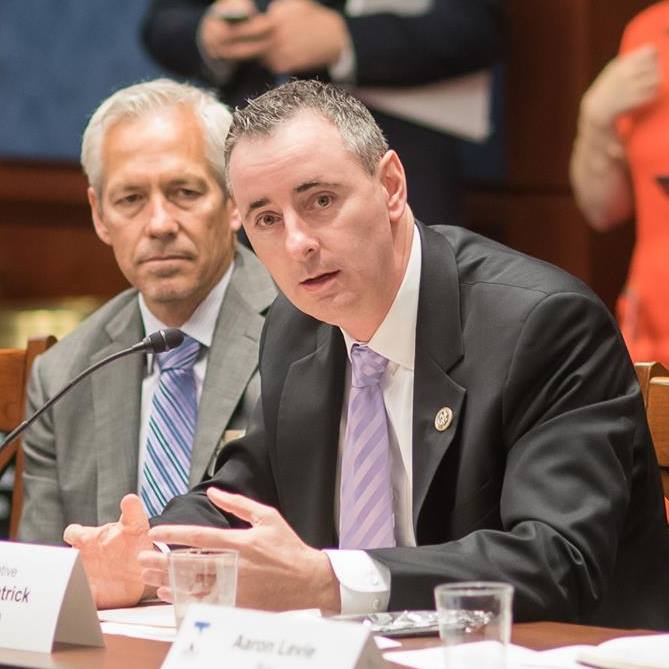U.S. Reps. Brian Fitzpatrick (R-1st dist.) and Annie Kuster, a New Hampshire Democrat, co-chairs of the Bipartisan Heroin & Opioid Taskforce, introduced the Extend Act – a bill that would help the Drug Enforcement Administration continue to treat fentanyl-related substances as Schedule I substances.
Currently this provision is set to expire in February 2020. This legislation will extend that deadline until February 2022. At a recent task force roundtable, DEA cited that its top legislative priority was extending the February 2020 deadline.
“Fentanyl is a manufactured opioid, which — especially in its illicit versions — is extremely dangerous, and illegal imports of these synthetic opioids has spiked in the past three years. Our nation’s drug epidemic is a complicated issue and our response must be multi-faceted,” Fitzpatrick said. “The DEA needs to keep fighting these substances on the frontlines, and the Extend Act will maintain a valuable tool for them to utilize.”
According to the DEA, fentanyl-related substances are 100 times more potent than morphine and 50 times stronger than heroin, making it harder to detect since it can be distributed in smaller amounts. In February 2018, the DEA placed all fentanyl-related substances under Schedule I on a temporary basis for a two-year period. This action includes all fentanyl analogues as part of that class of drugs. Fentanyl analogues have additions or substitutions to the core molecule as described under the DEA temporary scheduling of fentanyl-related substances. Due to the large number of possible variations to the fentanyl molecule, there is a wide variance in potency. The Extend Act would provide an additional two years for Congress and federal agencies to work together to come up with a solution that permanently prevents fentanyl-like substances from falling out of law enforcement’s control.
••
U.S. Rep. Brian Fitzpatrick (R-1st dist.), co-chairman of the Bipartisan Opioid Taskforce, joined two colleagues in re-introducing the Road to Recovery Act – legislation that would remove barriers to substance-use disorder treatment services under Medicaid and the Children’s Health Insurance Program.
This bill will specifically end Medicaid’s Institutions for Mental Disease exclusion for substance-use disorder and helps to increase access for inpatient treatment for Medicaid and CHIP enrollees. The IMD exclusion is a long-standing policy that prohibits the federal Medicaid matching funds to states for services rendered to Medicaid-eligible individuals who are patients for substance use and mental health treatment. Some states – including Pennsylvania – have used an “in lieu of services” provision allowing for inpatient treatment, but with limitations on patient population, facility size and length of stay. These limitations disproportionately affect Medicaid beneficiaries.
“This bipartisan, commonsense legislation would remove the IMD exclusion for substance-use disorder and help states expand access to inpatient addiction services for Medicaid enrollees in a fiscally responsible manner while not intruding on a state’s flexibility to implement care. The ‘IMD exclusion’ blocks access for the most vulnerable in our society,” Fitzpatrick said. “Pennsylvania has been overwhelmed by the opioid epidemic, and an important part of combatting this epidemic is by ensuring that more Americans can receive life-saving care. Our constituents need treatment for addiction, and they need it now.”
The opioid crisis is responsible for 67,000 overdose deaths in the United States in 2018. This bill makes the road to recovery more accessible through clearing the pathway to treatment services. According to the federal Department of Health and Human Services, substance abuse costs the country more than $600 billion annually and, based on conservative estimates, each dollar invested in addiction treatment programs yields a return of $4 to $7 in reduced drug-related crime, criminal justice costs and theft. When the return on investment is applied to healthcare costs, the total savings can exceed a ratio of 12:1.


